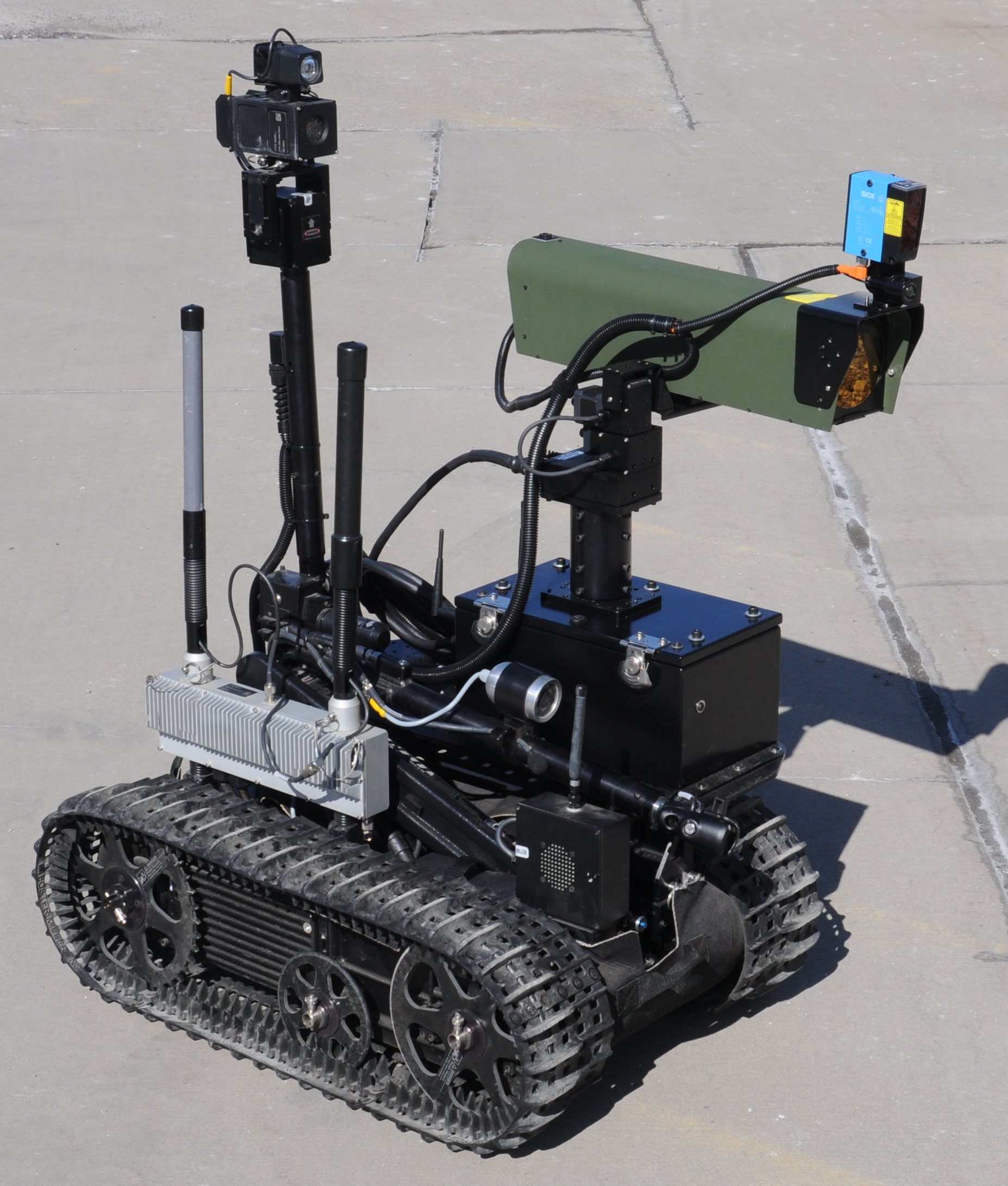Standoff detection of CBE hazards continues to be a difficult problem. Since 2001 the number and variety of in situ analytical sensors for non-contact detection has continued to expand. However, there continues to exist major gaps in instrumentation available to fill needed CONOPS situations. Standoff detection systems have been filled with IR methods including FTIR, SWIR, MWIR, and LWIR methods, all of which have serious limitations in terms of probability of detection and false alarm rates when attempting to detect CBE materials in natural backgrounds and at low concentrations. In addition, these methods are severely limited by background and ambient lighting and its uncontrolled variability. Methods with potentially higher probability of detection and lower false alarm rates have focused on development of various GC-MS or IMS methods, all of which are vapor or gas sensors. These sensors must be used in very close proximity to target materials, and even at close range cannot detect materials with low vapor pressure, which includes a wide range of CBE materials, and have a long list of natural interferents and confusants which lead to high false alarm rates.
Because of the shortfalls of IR and visible systems for standoff detection, shorter wavelength optical methods continue to be attractive the fill the detection CONOPS gap of sensitivity, specificity, and standoff. Ideally, standoff detection occurs at a distance which provides the highest level of safety for the soldier or first responder. These shorter wavelength methods have included primarily Raman based methods using visible (532 nm), near UV (355 nm), and deeper UV (262 nm, 248 nm, 224 nm, and 213 nm) excitation. LIBS systems also have been investigated for longer range standoff detection. However, these systems require very high power lasers and have serious eye safety problems.
Raman systems employing visible and near UV excitation for Raman spectroscopy have been limited both by ambient background issues and fluorescence obscuration of Raman emissions from the targeted materials or their surroundings or substrates. Even deeper UV systems such as the 262 nm Nd:YLF laser based systems have serious problem with fluorescence obscurations, although they are not limited by ambient backgrounds. Only methods with excitation below 250 nm have been shown to eliminate fluorescence interference with Raman emissions in the key CBE Raman marker bands. Toward that end, a focus has been on systems employing 248 nm KrF excimer lasers . However, all of these systems have very large SWaP, have very limiting shelf and operating lifetime issues, and contain hazardous materials of their own. Other methods employing shorter wavelength excitation suffer from excessive absorption and shallow penetration into target materials and resulting reduced Raman signal strength as well as large SWaP and lifetime issues.
Photon Systems in is continuing development of a new technology robot-mounted or hand-held sensor for reagentless, short-range, standoff detection and identification of trace levels chemical, biological, and explosive (CBE) materials on surfaces. This deep ultraviolet CBE sensor is the result of Army STTR and DTRA programs. The 9 lb. handheld STANDOFF 200 analyzer can discriminate CBE from background clutter materials using a fusion of deep UV excited resonance Raman (RR) and autofluorescence or laser induced native fluorescence (LINF) emissions collected is less than 1 ms. RR is a method that provides information about molecular bonds, while LINF spectroscopy is a much more sensitive method that provides information regarding the electronic configuration of target molecules.
Standoff excitation of suspicious packages, vehicles, persons, and other objects that may contain hazardous materials is accomplished using excitation in the deep UV where there are four main advantages compared to near-UV, visible or near-IR counterparts. 1) Excited between 220 and 250 nm, Raman emission occur within a fluorescence-free region of the spectrum, eliminating obscuration of weak Raman signals by fluorescence from target or surrounding materials. 2) Because Raman and fluorescence occupy separate spectral regions, detection can be done simultaneously, providing an orthogonal set of information to improve both sensitivity and lower false alarm rates. 3) Rayleigh law and resonance effects increase Raman signal strength and sensitivity of detection. 4) Penetration depth into target in the deep UV is short, providing spatial/spectral separation of a target material from its background or substrate. 5) Detection in the deep UV eliminates ambient light background and enable daylight detection.

Key Issues
False Alarms
A serious issue when trying to detect CBE materials in natural backgrounds and at low concentrations
Standoff Distance
Greater standoff distance provides the highest safety for the soldier or first responder.
Portability
Other traditional deep UV laser sources require heavy and bulky instrumentation.
Downloads
STANDOFF 200
The STANDOFF 200 Analyzer is the first and only fully integrated real-time deep UV Raman and fluorescence analyzer instrument, providing complementary and confirmatory testing in a single handheld device.
TUCS 1000
The TUCS 1000 is a handheld instrument for laser based detection of trace chemicals in the fg or pg/cm2 concentration range.
Robotic Deep UV Standoff Sensors
Photon Systems has developed deep UV standoff CBE sensors that are robot-mounted. Using fluorescence and Raman bands, they enable rapid detection and classification of trace and bulk levels of chemical, biological and explosive contaminants
Get In Touch
Keep informed about the latest deep UV developments at Photon Systems by joining our mailing list.
ADDRESS
1512 Industrial Park St. Covina, CA 91722-3417
PHONE
626 967-6431



